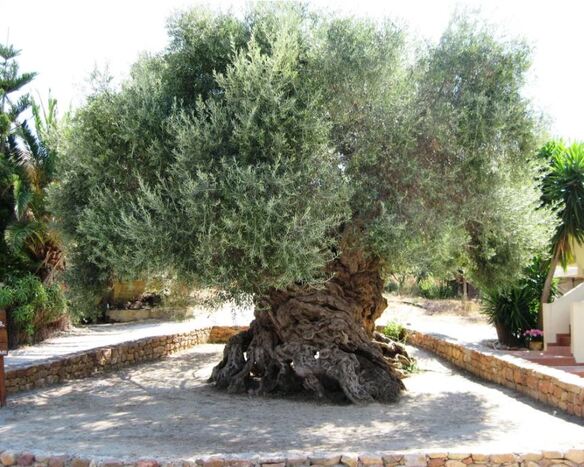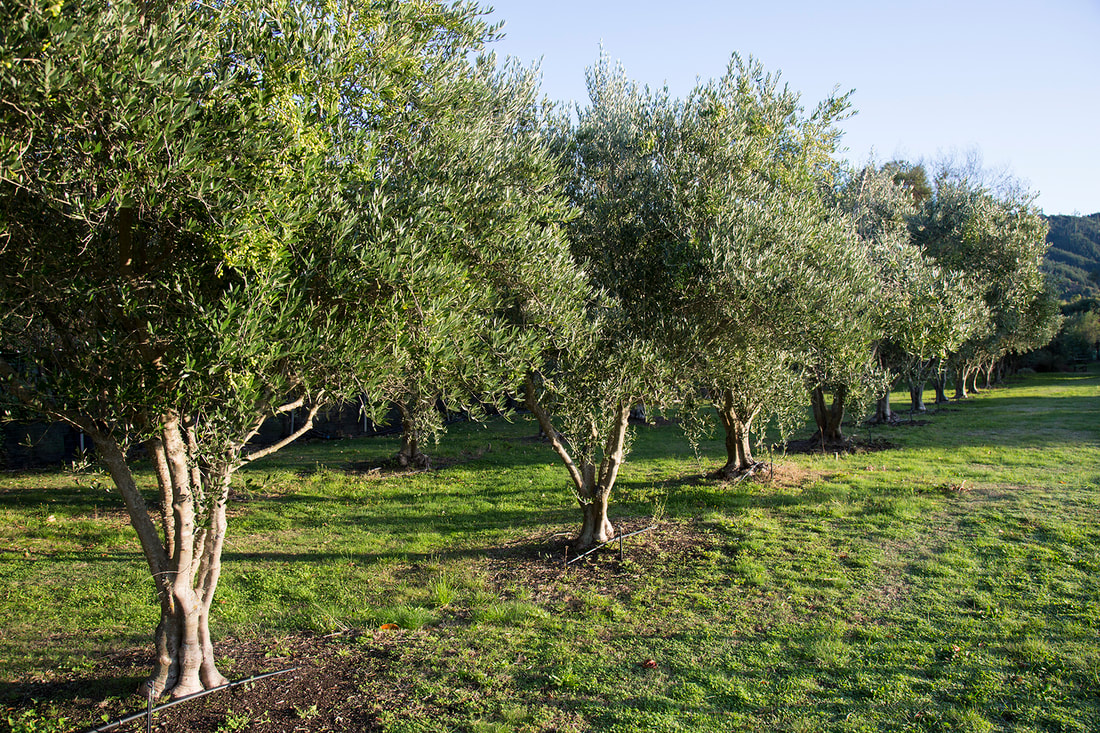|
The olive was native to Asia Minor and spread from Iran, Syria and Palestine to the rest of the Mediterranean basin 6,000 years ago. It is among the oldest known cultivated trees in the world - being grown before the written language was invented. It was being grown on Crete by 3,000 BC and may have been the source of the wealth of the Minoan kingdom. The Phoenicians spread the olive to the Mediterranean shores of Africa and Southern Europe. Olives have been found in Egyptian tombs from 2,000 years BC. The olive culture was spread to the early Greeks then Romans. As the Romans extended their domain they brought the olive with them. 1,400 years ago the Prophet of Islam, Muhammad, advised his followers to apply olive oil to their bodies, and himself used oil on his head. The use of oil is found in many religions and cultures. It has been used during special ceremonies as well as a general health measure. During baptism in the Christian church, holy oil, which is often olive oil, may be used for anointment. At the Christmas mass, olive oil blessed by the bishop, "chrism", is used in the ceremony. Like the grape, the Christian missionaries brought the olive tree with them to California for food but also for ceremonial use. Olive oil was used to anoint the early kings of the Greeks and Jews. The Greeks anointed winning athletes. Olive oil has also been used to anoint the dead in many cultures. The oldest olive tree (image below) is located on the Greek island of Crete and is one of seven olive trees in the Mediterranean believed to be at least 2,000 to 3,000 years old. Although its exact age cannot be verified, the Olive Tree of Vouves might be the oldest among them, estimated at over 3,000 years old. It still produces olives, and they are highly prized. Olive trees are hardy and drought-, disease- and fire-resistant — part of the reason for their longevity and their widespread use in the region. In the past several hundred years the olive has spread to North and South America, Japan, New Zealand and Australia. Olive trees were brought to New Zealand by the early European settlers from the 1830’s. Serious propagation of olive trees was, however, only initiated in 1986 with the start of imported cuttings from Israel into Blenheim in the South Island. Subsequently other varieties were imported from Australia. Interest in olive trees surged in the 1990’s with more than 200,000 trees planted across the country. A number of groves were subsequently removed (and unfortunately continue to be removed), either in a move to a higher yielding crop (e.g. grapes) or because the varieties planted were not suitable. The current estimate, based on Olives NZ research, is 400,000 trees across New Zealand. The varieties planted in New Zealand originate now from all of the main olive growing regions of the world; Italy, Spain, France, Israel, Greece. However the most planted varieties are the Tuscan varieties of Frantoio and Leccino. There are in excess of 300 productive groves in New Zealand and the grove size generally ranges between 500 and 1,000 trees. Three regions have one super large commercial groves each; Auckland (40,300 trees), Marlborough (5,117 trees) and Nelson (9,000 trees). Hawke’s Bay has two (17,198; 27,541). The majority of olive groves operate their own brand and most of these direct sell their product(s) to the consumer (via markets, gate sales, etc.), to restaurants and via specialty stores. Probably a dozen have penetrated the supermarket sector where they compete with imported products. Isobel Olives Grove
0 Comments
Leave a Reply. |
AuthorChris Piper Archives
June 2024
Categories |



 RSS Feed
RSS Feed